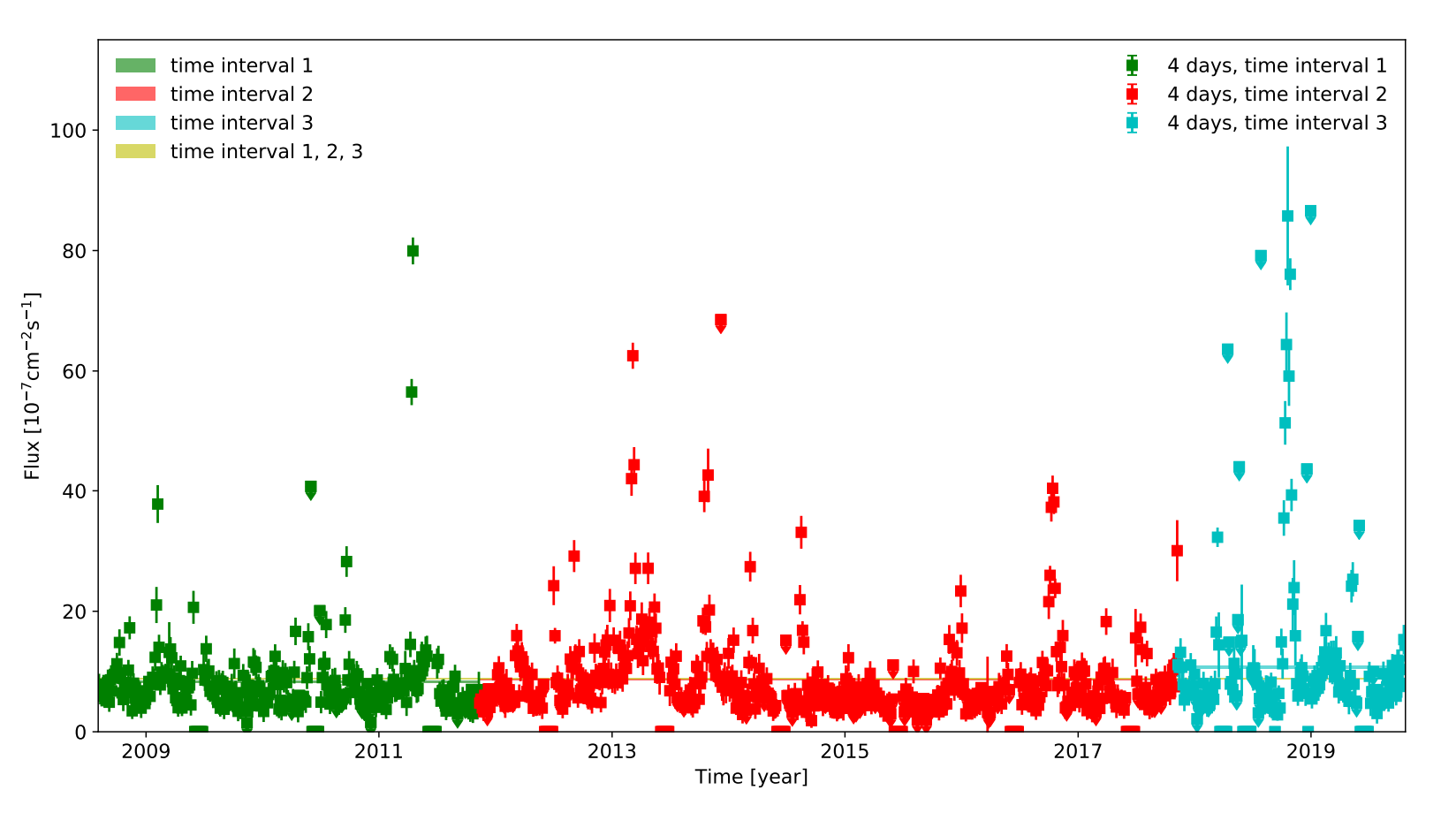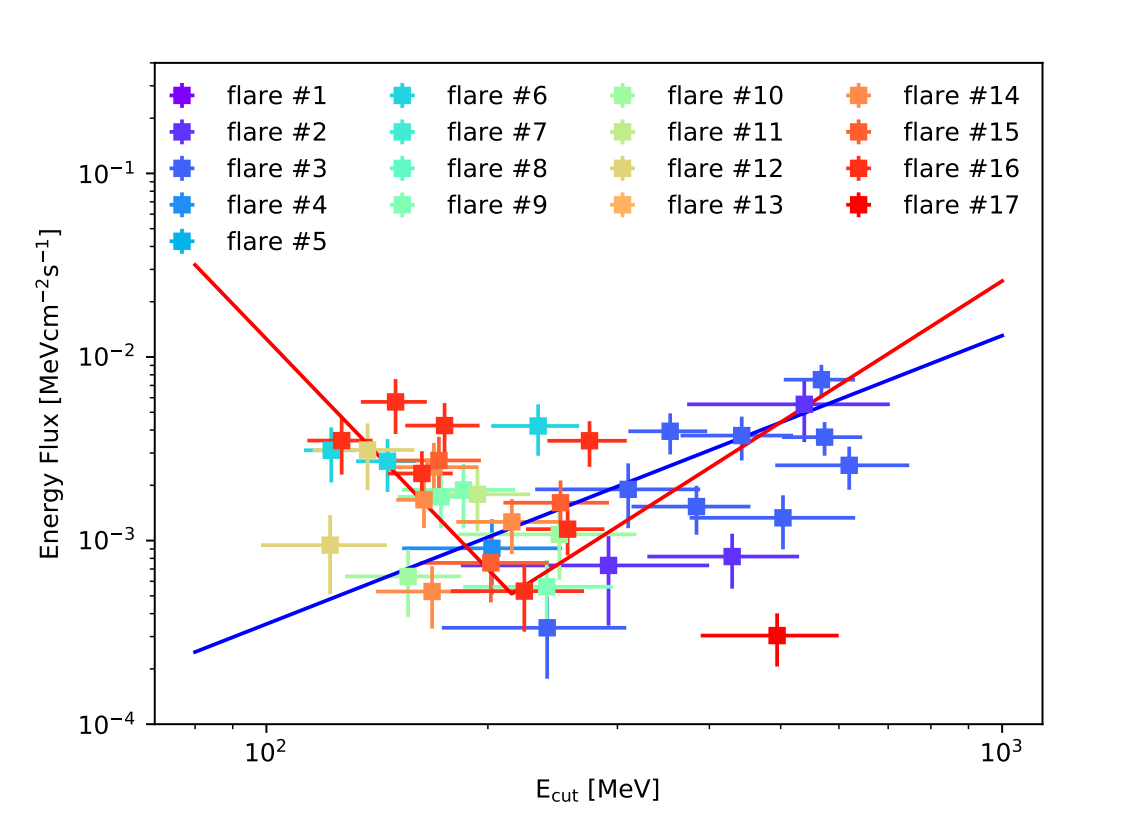Gamma-Ray Flares from the Crab Nebula
To enlarge the flare sample and to investigate their statistical properties, the research team, from Purple Mountain Observatory of the Chinese Academy of Sciences, investigated the flaring emission from the Crab Nebula with the observations of the Fermi-LAT. Seventeen significant flares in the light curve of the low-energy (synchrotron) component of the gamma-ray emission were identified, without any significant change or clustering of the flare rate during 11 years of the observation (see Fig. 1). A special flare with an extremely long duration of nearly one month, occurred in October, 2018, was detected, with synchrotron photons up to energies of about 1GeV.

Fig. 1 The light curves of the low-energy (synchrotron emission) component in 4-day binning. (Image by HUANG Xiaoyuan)
It was also found that the synchrotron component from the Crab Nebula could be fitted by a steady power-law background and a variable flare component with an exponential cutoff power-law spectrum, not only for the individual flare but also for the combined data, which may favor a similar emission mechanism for all flares. However, there was not a universal relation between the cutoff energy and the energy fluxes of the flares (see Fig. 2), which may reflect the complicated acceleration and/or cooling processes of the involved particles.

Fig. 2 The energy flux versus the cutoff energy of the flare component for all identified flares together. A PL function and a broken power-law are fitted, shown in blue and red line respectively. (Image by HUANG Xiaoyuan)
This work has been published in The Astrophysical Journal.